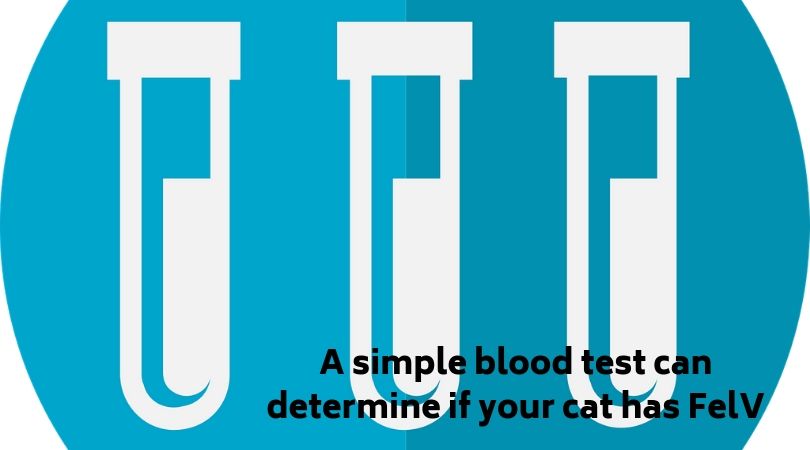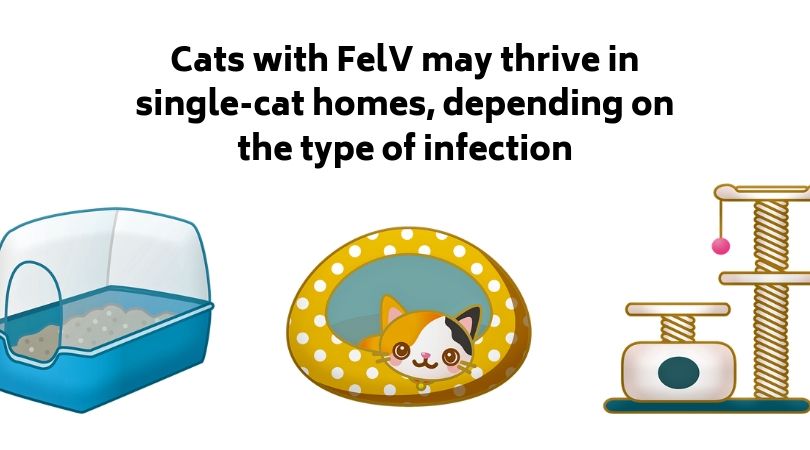Feline Leukemia Virus (FeLV) - What Is It?
FeLV is a retrovirus that infects cats and is responsible for more deaths than any other organism. It is, unfortunately, not uncommon. FeLV is highly contagious and is easily spread once a cat has been in close contact with another infected cat. Kittens and immune-compromised cats are more susceptible to the disease. Cats can contract the virus through saliva, urine, using the same litter box, nursing, and cat bites. Cats can also be born with the virus if their mothers were infected.
Types of Infection
There are four separate classes of infection: abortive, regressive, latent, and progressive.
- Abortive infections are those in which the exposed cat produces an effective and early immune response. Viral replication does not occur, and virus-infected cells are eliminated. These cats test negative for circulating viral antigen.
- Regressive infections are those in which viral replication is limited, so a small population of virus-infected cells remains. These cats test negative for the antigen, but the virus can be detected in a small percentage of blood cells by polymerase chain reaction (PCR), a type of blood test. These cats may go on to eliminate the virus completely. These infected cats are not viremic (and therefore not contagious), but may be infectious through blood transfusion.
- Latent infections are those in which a moderate amount of infected cells remain. These cats test negative for the antigen, but test positive with PCR - similar to regressive infections. The latently infected cells do have the potential for the virus to re-activate, but the cats are not contagious as long as the infection remains latent.
- Progressive infections are those in which virus replication occurs, so both viral antigen and genetic material can be detected in the blood of these cats. The cats actively shed virus (primarily in saliva and feces), and are likely to become ill with FeLV-related disease.
Signs and Diagnosis
A FeLV-positive cat may experience a number of symptoms after they contract the virus. It can take anywhere from a few weeks to many years to show these symptoms. Once the virus becomes active, they can experience symptoms such as:
- Weight loss
- Diarrhea
- Loss of appetite
- Inflamed lymph nodes
- Fever
- Infections of the bladder, skin, and respiratory systems
- Weakness
- Infertility

There is a simple blood test that can be run to know whether or not your cat is FeLV positive. This can be done at your veterinarian's office, and it typically takes about 30 minutes to get the results. Additionally, your veterinarian may recommend blood chemistry, hematology, x-rays, a bone marrow aspirate, or special antibody testing.
Treatment and Prevention
There is currently no successful treatment to reverse the FeLV virus once a cat has been infected. Any time you add a new cat to the household, whether a kitten or adult, he should first be tested for the virus (and then vaccinated, if tested negative). In order to prevent your cat from contracting Feline Leukemia Virus, make sure your cat does not come in contact with FeLV positive cats - this is particularly important if you allow your cat outdoor access. All cats that are allowed outdoor access should stay current with their FeLV vaccination, and it may not a bad idea for indoor cats as well (your veterinarian will talk about your pet’s personalized vaccination protocol).
How to Care for a FeLV-positive Cat
The prognosis for a FeLV-positive cat is variable. It really depends on what type of infection he has, and how much supportive care he is able to receive when he needs it. For cats that are persistently infected, their life expectancy is typically between two and a half and three years. Others can live a longer life and may remain healthy for several years. FeLV-positive cats can have suppressed immune systems; therefore, they can contract common (secondary) illnesses easier than others. Taking your cat to the vet at least annually can help ensure your cat is healthy and happy. All FeLV-positive cats should be indoor only, and in a one-cat-household (unless housed with other FeLV-positive cats).

It is important to note that retroviruses are unstable, live for only minutes outside the cat's body, and are readily destroyed by most disinfectants. Because of this, a new, healthy cat can be brought safely into a "contaminated" house within days of the departure of an FeLV-infected cat and with good hygiene and cleaning. If you have more questions about Feline Leukemia Virus, contact your veterinarian.

